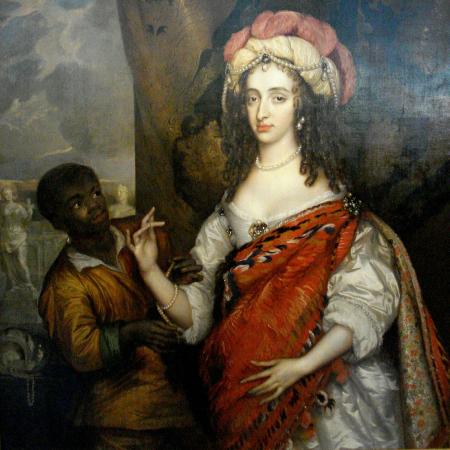For centuries, probably millennia (but I don’t have the material evidence for you) mankind has been fascinated by bird plumage and has used it as body adornment. Feathers become imbued with specific meanings, for many ethnic groups they become a fundamental part of the costumes/objects they use to communicate with spirits and gods. They become part of the rituals of life and death.
The use of bird feathers is very much connected to their availability/rarity, as well as their appearance. For example in Europe in the middle ages brightly coloured birds were virtually unknown. The stunning, colourful feathers of Amazonian and Pan-American birds only became known after the “discovery” of the Americas in 1492. These birds (in the Caribbean and Latin American countries) must have charmed the fresh-off-the-ship Europeans with their appearance and song. Soon they became covetable and tradable – dead or alive. We begin to see feathers in European portraiture, in one form or another, by the early decades of the 1500s. Either they appear as decoration on the attire of savages (thus confirming the use of feathers and the use of specific costume by different ethnic groups in these distant lands. Today we would take this as evidence of developed and communicative local cultures – back then they were just savages dressed in bird feathers and little else).
Vasco Fernandes, Adoration of the Magi, 1501-6c, Grao Vasco museum, Viseu, Portugal
In this Portuguese religious painting of the three kings paying homage to the baby Jesus, we see Balthazar, the traditionally “ethnic” king, represented as an Amazonian chief from deepest Brazil. His facial features and skin tone are a clear indication of his ethnic origin as is the feather crown he wears on his head. He has however been “covered up” for modesty’s sake with a pair of silk breeches in the European tradition.
Occasionally we find portraits of European sitters in ethnic costume which includes feathers
Adrien Hanneman, possibly Mary Princess of Orange, 1655c, Franz Hals museum, Netherlands
By the 17th century such portraits had become a fashion. In the portrait above Princess Mary is extremely fashionable in a white three-quarter sleeve shiny silk dress. The close-fitting pearl necklace and the pearl drop earings perfectly contemporary. But she is also wearing an exotic turban vaguely reminiscent of those worn by Persian pashas or Indian maharajhas (incidentally both masculine). The turban is topped by large ostrich feathers which have been dyed red. Her body is draped in a cloak made of red/orange, white and black feathers. These are sewn onto a base fabric and the garment is lined in brocaded european silk. The feather-work looks original i.e. made in the Americas to local ethnic tradition. The jewelled pin used to secure the cloak to the left shoulder is also European. The overall effect is startling and the intention was undoubtedly symbolic. By wearing such incongruous items of ethnic apparel the Princess is alluding to far off places and people. A statement of power made through items of dress associated with power in other cultures (the chief’s cloak, the high-ranking or aristocrat’s headdress). By mid 1600s european countries such as England and Holland were asserting their power overseas in the name of trade (the East India companies already well established) and soon, imperialism.



Reblogged this on Sartorial Constructs and commented:
A truly fascinating site. Well worth following
LikeLike